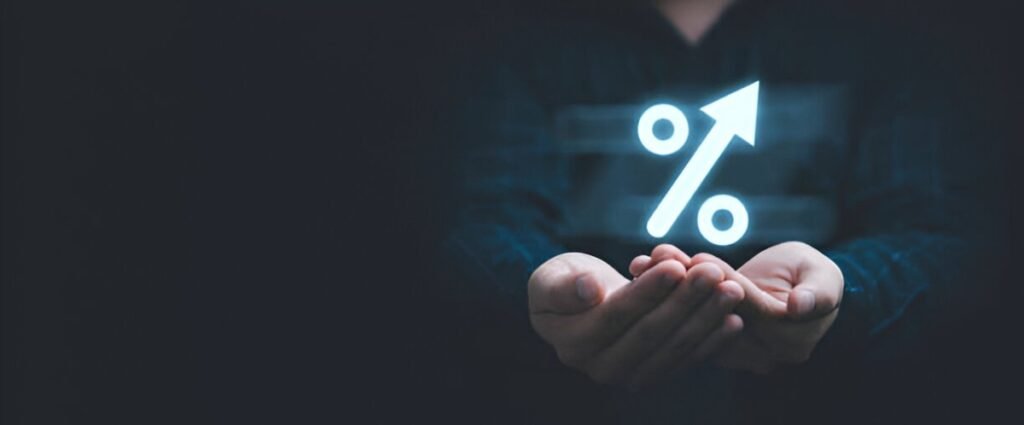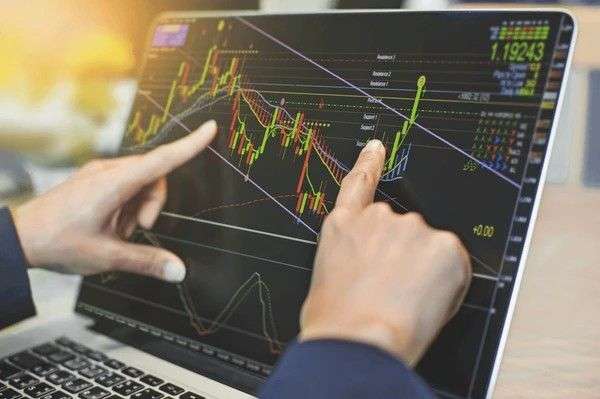As an investor, I often find myself navigating through the dynamic and complex landscape of global stock markets. Every market has its own unique characteristics, ranging from the level of regulation to the types of companies listed, which can make them suitable for different investment strategies. In this article, I will take you through a detailed exploration of various stock markets around the world. We will cover the major exchanges, their features, how they operate, and what makes them stand out.
Table of Contents
What is a Stock Market?
Before we dive into the specifics of each market, let’s first clarify what a stock market is. A stock market is a platform where buyers and sellers trade stocks (equity securities) and other financial instruments like bonds, commodities, and derivatives. The stock market is often seen as a reflection of the economy, with its movements offering insights into the broader economic trends.
Types of Stock Markets
There are several types of stock markets globally, each with its own operational structure and characteristics. These include:
- National Stock Markets: These are markets that serve a specific country or region. The companies listed on these exchanges are primarily domestic.
- Regional Stock Markets: These markets cater to a group of countries within a specific region.
- Global Stock Markets: These markets have a global influence, and companies from various countries can list their shares here.
Major Stock Markets Around the World
In this section, I will discuss some of the most prominent stock markets worldwide. These exchanges are hubs for trading stocks, and understanding how they work can give you valuable insights into global investing.
1. New York Stock Exchange (NYSE)
The NYSE is the largest stock exchange in the world by market capitalization. Located in New York City, it has been the heartbeat of global finance for over two centuries. It lists some of the largest and most well-known companies in the world, such as Apple, Coca-Cola, and ExxonMobil.
The NYSE operates on a hybrid system, which combines both an electronic trading platform and a traditional physical trading floor. This unique structure allows it to handle a high volume of transactions efficiently while maintaining a human element in the trading process.
Key Features:
- Market Cap: $23 trillion (as of 2024)
- Number of Listed Companies: Over 2,800
- Trading Hours: 9:30 AM to 4:00 PM (Eastern Time)
- Trading System: Hybrid (Electronic + Floor Trading)
Example: Let’s say you want to buy shares of a company listed on the NYSE. If you decide to invest in Apple (AAPL), the process would involve placing an order through your broker. The price of Apple stock will fluctuate based on market conditions, and you can buy or sell it within the trading hours.
2. NASDAQ
NASDAQ is another major stock exchange based in the United States, but it differs from the NYSE in several key ways. While the NYSE has a physical trading floor, NASDAQ operates entirely electronically. It is the second-largest stock exchange in the world by market capitalization, with over 3,000 companies listed, including tech giants like Microsoft, Amazon, and Google.
NASDAQ is known for being a technology-heavy exchange, making it an attractive option for investors interested in tech stocks. It is also known for its fast-paced, highly liquid trading environment.
Key Features:
- Market Cap: $18 trillion (as of 2024)
- Number of Listed Companies: Over 3,000
- Trading Hours: 9:30 AM to 4:00 PM (Eastern Time)
- Trading System: Fully Electronic
Example: If I decide to invest in Amazon (AMZN), I can do so through a brokerage account that gives me access to NASDAQ. Like the NYSE, NASDAQ provides real-time stock prices, and the process for buying and selling stocks is similar, except it occurs entirely online.
3. London Stock Exchange (LSE)
The LSE, located in the United Kingdom, is one of the oldest stock exchanges in the world. It boasts a diverse range of companies, particularly in the finance, energy, and mining sectors. The LSE also operates a secondary market, known as AIM (Alternative Investment Market), which is designed for smaller, growth-oriented companies.
The LSE is also a major player in global finance, with many foreign companies choosing to list their shares here in order to attract international investors.
Key Features:
- Market Cap: $5 trillion (as of 2024)
- Number of Listed Companies: Over 2,000
- Trading Hours: 8:00 AM to 4:30 PM (London Time)
- Trading System: Electronic
Example: Suppose I want to invest in a UK-based energy company, BP (BP). I can purchase BP shares through the LSE, and the price will vary based on demand and market conditions. This is similar to the process on the NYSE or NASDAQ.
4. Tokyo Stock Exchange (TSE)
The Tokyo Stock Exchange is the largest stock market in Japan and one of the biggest in Asia. It plays a crucial role in the global economy, with companies such as Toyota, Sony, and Mitsubishi listed on the exchange. The TSE has a reputation for being highly regulated, which offers investors a sense of security when trading.
The TSE is fully electronic, and trading takes place through a centralized computer system known as the “TSE Trading System.”
Key Features:
- Market Cap: $6 trillion (as of 2024)
- Number of Listed Companies: Over 3,700
- Trading Hours: 9:00 AM to 3:00 PM (Japan Standard Time)
- Trading System: Fully Electronic
Example: If I want to buy shares of Toyota (7203.T), I can do so through a Japanese brokerage platform. The price of Toyota stock will be influenced by factors such as the company’s performance, global economic trends, and investor sentiment.
5. Hong Kong Stock Exchange (HKEX)
The Hong Kong Stock Exchange is one of the most important stock markets in Asia, serving as a bridge between China and the global economy. HKEX is home to some of the largest Chinese companies, such as Tencent and Alibaba. It has a strong international presence and attracts a lot of foreign investment due to its proximity to mainland China and its role as a gateway for Chinese companies seeking to access global capital.
Key Features:
- Market Cap: $6 trillion (as of 2024)
- Number of Listed Companies: Over 2,500
- Trading Hours: 9:30 AM to 4:00 PM (Hong Kong Time)
- Trading System: Electronic
Example: If I decide to invest in Alibaba (9988.HK), a Chinese e-commerce giant, I can do so through the HKEX. The process involves placing an order via a broker, and I can buy and sell Alibaba shares during the trading hours.
6. Shanghai Stock Exchange (SSE)
The Shanghai Stock Exchange is the largest stock exchange in mainland China. It is highly regulated and predominantly focuses on Chinese companies. The SSE is home to large state-owned enterprises and plays a key role in China’s economic development. However, foreign investors face certain restrictions when trading on the SSE, making it a less accessible market compared to others.
Key Features:
- Market Cap: $5 trillion (as of 2024)
- Number of Listed Companies: Over 1,500
- Trading Hours: 9:30 AM to 3:00 PM (China Standard Time)
- Trading System: Electronic
Example: Investing in a Chinese company like PetroChina (601857.SS) would involve buying shares through a Chinese broker that can access the SSE. The shares’ price will depend on factors such as the global demand for oil and domestic Chinese economic conditions.
7. Euronext
Euronext is a pan-European stock exchange with a strong presence in countries such as France, the Netherlands, and Portugal. It is the largest exchange in Europe and includes companies from a variety of industries. Euronext has a reputation for offering liquidity and transparency, and it plays a key role in the European economy.
Key Features:
- Market Cap: $5 trillion (as of 2024)
- Number of Listed Companies: Over 1,500
- Trading Hours: 9:00 AM to 5:30 PM (Central European Time)
- Trading System: Electronic
Example: If I wish to invest in a European company like Airbus (AIR), which is listed on Euronext Paris, I can easily do so through a European brokerage account.
Comparative Overview of Stock Markets
| Stock Exchange | Market Capitalization | Number of Listed Companies | Trading Hours | System Type |
|---|---|---|---|---|
| NYSE | $23 trillion | 2,800+ | 9:30 AM – 4:00 PM ET | Hybrid (Electronic + Floor) |
| NASDAQ | $18 trillion | 3,000+ | 9:30 AM – 4:00 PM ET | Fully Electronic |
| LSE | $5 trillion | 2,000+ | 8:00 AM – 4:30 PM GMT | Electronic |
| TSE | $6 trillion | 3,700+ | 9:00 AM – 3:00 PM JST | Fully Electronic |
| HKEX | $6 trillion | 2,500+ | 9:30 AM – 4:00 PM HKT | Electronic |
| SSE | $5 trillion | 1,500+ | 9:30 AM – 3:00 PM CST | Electronic |
| Euronext | $5 trillion | 1,500+ | 9:00 AM – 5:30 PM CET | Electronic |
Conclusion
Each stock market around the world has its own unique characteristics, making it important for investors to understand their differences. Whether you are investing in the NYSE or the Shanghai Stock Exchange, knowing the market structure, trading hours, and the types of companies listed will help you make informed decisions. As you continue your investment journey, keep in mind that diversifying across multiple markets can provide access to a wide range of opportunities and help mitigate risk.





